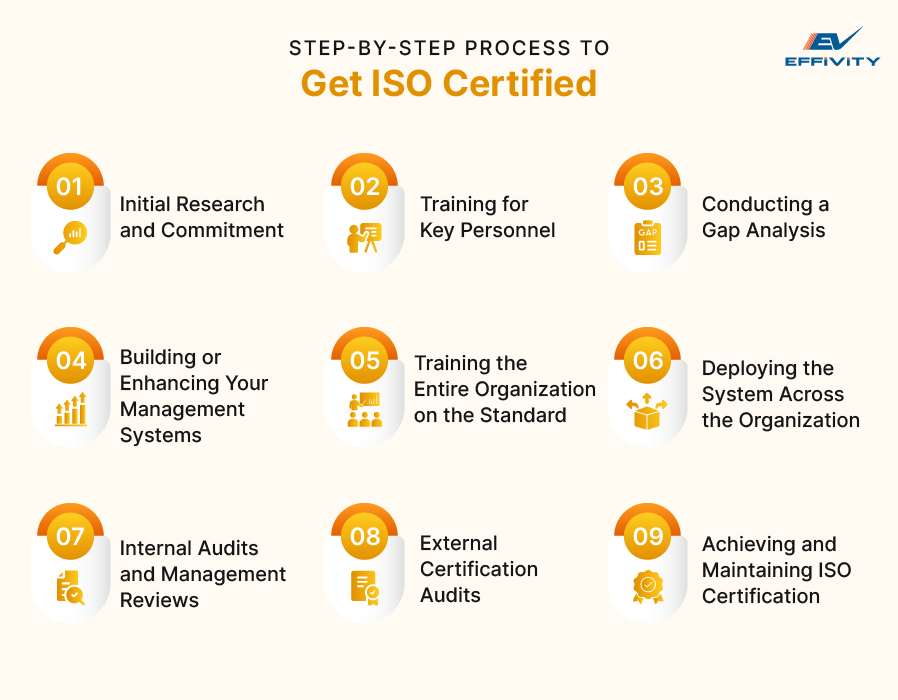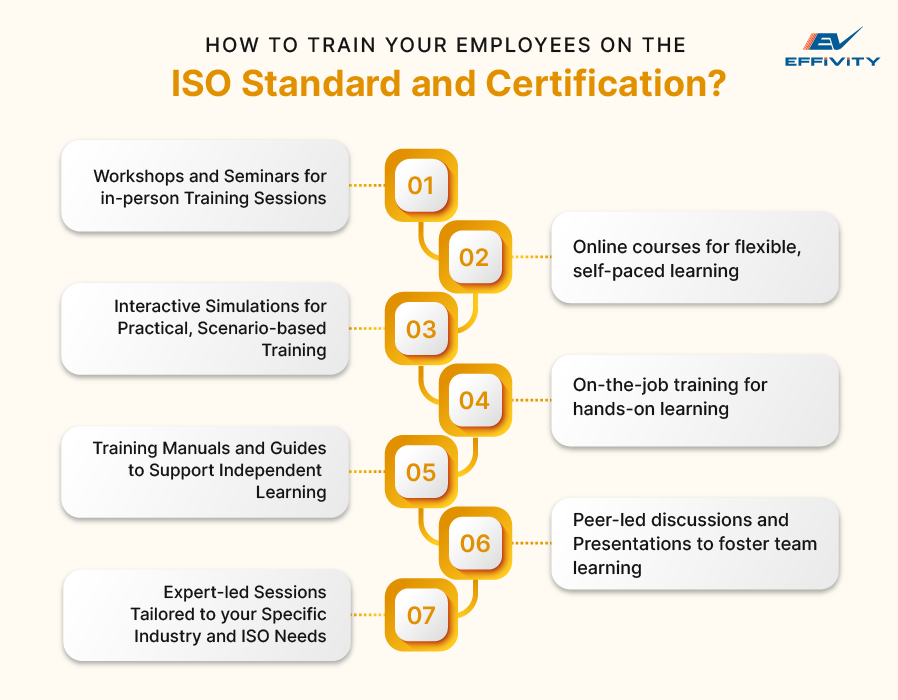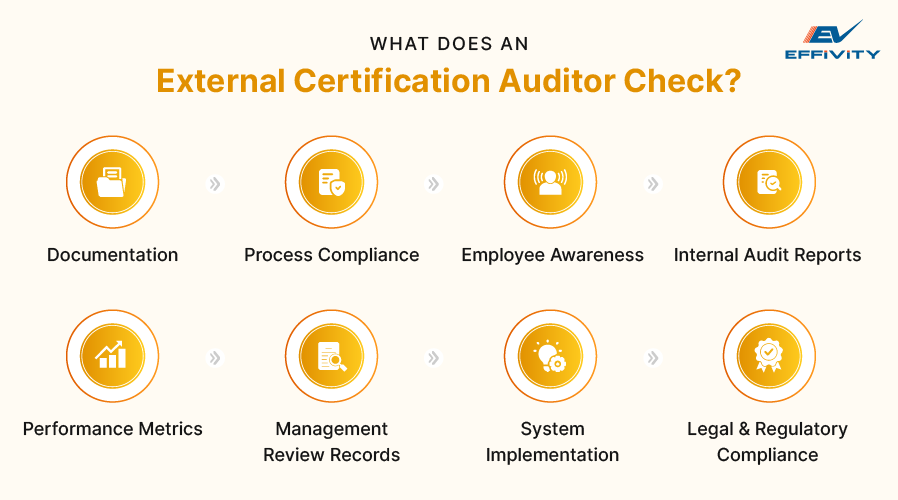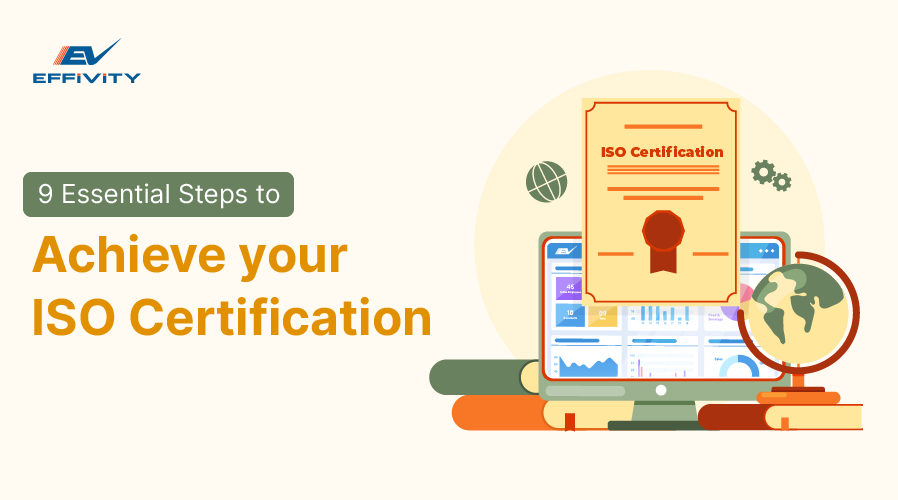ISO standards are crucial for businesses of all shapes and sizes. They help companies follow practices that are consistent and efficient.
By following these standards, businesses can speak the same language as their customers, partners, and regulatory bodies—even across borders. This makes it much easier for them to operate in a global market.
So, when businesses get ISO certified, it shows their processes meet high standards, which in turn earns them credibility and trust with stakeholders.
This guide will walk you through the ISO certification process, giving you a clear view of how to get your business in line with international standards to achieve lasting success.
What Is ISO Certification?
ISO is an independent organization that creates standards to help businesses improve their systems. These standards are known and respected globally, which makes getting certified a big plus for businesses looking to gain credibility.
An ISO certification, thus, shows that a business has a solid approach to things like quality control, environmental responsibility, and keeping customer data secure.
Here are some common ISO certifications:
- ISO 9001 Certification: for quality management systems
- ISO 14001 Certification: for environmental management systems
- ISO 27001 Certification: for information security management systems
- ISO 45001 Certification: for occupational health and safety
- ISO 22000 Certification: for food safety management systems
Whether your focus is on quality, safety, security, or being green, ISO certification can seriously upgrade your business and build lasting trust with the people who matter.
Step-by-step Process to Get ISO Certified
Below are nine steps every business must follow to get their ISO certification:

1. Initial Research and Commitment
The first step to getting ISO certified is to figure out which ISO standards apply to business. If you’re in manufacturing, for instance, you might focus on ISO 9001 for quality management. Or ISO 27001 if you’re an IT firm handling sensitive data.
Then, you need to get top management on board. Leaders need to be fully supportive, as they’ll be allocating resources and approving policies.
A good place to start is by downloading the standard documentation from the ISO website or your country’s standards body. This will give you a firsthand look at the ISO certification requirements, terminology, and scope of the standards you’re interested in pursuing.
2. Training for Key Personnel
You need to invest in comprehensive training for individuals responsible for implementing and managing the ISO process.
Consider hiring a seasoned ISO consultant or enrolling your team in certified ISO courses to ensure they’ve got the right knowledge to drive the certification effort.
3. Conducting a Gap Analysis
This is basically a review of how your company is currently running compared to the requirements of the ISO standard you’re aiming for. This step shows you where your organization is falling short and what needs to be done to meet the ISO requirements.
So, if your company doesn’t have formal documents for important procedures or lacks a system for managing risks—fix it before moving forward with the certification.
4. Building or Enhancing Your Management Systems
The core of ISO certification lies in your management system—the structured framework of policies, procedures, and practices that help you meet the standard’s requirements consistently.
You’ll need to develop new policies to tweak existing ones to align with the ISO standard. This involves creating the necessary documentation and getting all relevant staff involved in the process.
5. Train the Entire Organization on the Standard
Now that your management system is built (or updated), it’s time to train your entire workforce on the relevant ISO standard.
Use a mix of training methods, like workshops, online modules, and interactive sessions, to keep different teams engaged. Provide reference materials and follow-up sessions to reinforce what they’ve learned.

6. Deploying the System Across the Organization
The deployment phase is crucial because it lets you test the system in practice. You might run into issues or inefficiencies that weren’t obvious during planning.
For instance, employees might find certain processes too time-consuming or there may be unexpected communication gaps.
The key is to closely monitor the initial deployment and create a feedback loop where employees can share their suggestions.
7. Internal Audits and Management Reviews
Internal audits give you a chance to assess how well your management system is working before an external auditor gets involved.
In addition to these audits, you’ll also need to do a management review. This is where top management checks on the system’s overall performance. They’ll look at audit findings, customer feedback, KPIs, and other relevant data.
8. External Certification Audit
This step usually happens in two stages:

- Stage 1: The auditor checks your paperwork (policies, procedures, records) to ensure it meets the ISO standard.
- Stage 2: The auditor sees how well the system is working across the whole organization. They’ll verify that your team is following the processes and that the system is actually doing its job.
A heads-up: prep your team by doing mock audits and make sure everyone’s on the same page with procedures and paperwork.
9. Achieving and Maintaining ISO Certification
You’ll get your ISO certification once you pass the external audit. But, an ISO certification usually lasts for three years. So, you’ll need to have yearly audits done by the certification body to renew it.
However, audits aren’t everything. It’s also important to create a culture of continuous improvement. Use what you learn from audits to make your processes better over time.
Conclusion
An ISO certification beefs up your business’s reputation and operational skills. However, doing all of that manually is some work cut out.
That’s where management software comes in. Think of these solutions as your management systems put on autopilot.
Effivity is a leading company that provides QMS software, OHSMS software, ISMS software, HSE software, and FSMS software solutions. The best part? They’re all ISO certified, so you don’t have to worry about anything.
Just set up your account, configure the software as per your business needs, and get the ball rolling!
We also provide integrated management system solutions. This means you can combine more than one software to keep up with multiple ISO standards!
Click here to learn more.





















